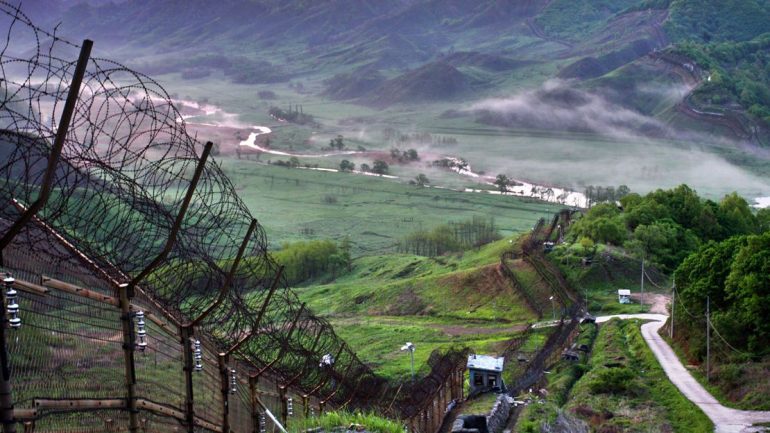- South Korea employs AI technology in its military to enhance surveillance of North Korea.
- AI-powered systems are tested in Yeoncheon county, Gyeonggi province, along the border.
- Thermal observation devices integrated with AI analyze real-time video footage.
- Challenges like fog obstructing visibility are addressed with AI-driven solutions.
- A robotic camera system aids in monitoring rugged terrains along the DMZ.
- Tensions persist between North and South Korea since the 1950s Korean War.
Main AI News:
The utilization of artificial intelligence (AI) by South Korea in its military operations to bolster surveillance capabilities over North Korea has been reported. According to recent findings, Seoul is currently trialing AI-powered systems aimed at “improving the monitoring of escalating North Korean threats” along the front lines situated in Yeoncheon county, a region in the northern Gyeonggi province that serves as a demarcation point on the Korean Peninsula, as outlined by Yonhap News.
These AI-integrated systems have been strategically deployed at a South Korean military outpost positioned along the southern periphery of the Demilitarized Zone (DMZ), which acts as a buffer between the two nations. The Hansan Battalion of the South Korean military is leveraging AI technology in conjunction with established thermal observation devices, enabling real-time video analysis to identify both human and wildlife activities, including deer and boar, within the region, as highlighted in the report.
Challenges such as fog, which obstructs conventional surveillance methods, have been effectively mitigated through the implementation of advanced AI-driven surveillance solutions. This technological advancement has significantly facilitated the monitoring of North Korean movements for South Korean soldiers, streamlining border security operations along the DMZ.
Furthermore, the South Korean military has introduced a robotic camera system designed to swiftly traverse along a rail fence, enabling efficient monitoring of rugged terrains that are otherwise inaccessible or time-consuming to patrol on foot.
The ongoing conflict between North Korea and South Korea, which traces back to the 1950s following the cessation of the Korean War in 1953 without a formal peace treaty, underscores the enduring tensions between the two nations. The enduring division is marked by the 2.4-mile-wide DMZ, serving as a stark reminder of the unresolved conflict.
Since the conclusion of the Korean War, the United States has maintained a military presence in South Korea, with approximately 28,500 American soldiers stationed in the region, further underlining the strategic significance of the Korean Peninsula in the geopolitical landscape.
Conclusion:
The integration of AI technology into South Korea’s military operations for heightened surveillance of the North Korean border underscores the nation’s commitment to leveraging advanced solutions for security challenges. This deployment signifies a growing market for AI-driven defense systems, with potential implications for companies specializing in military technology and border security solutions. As South Korea continues to invest in AI-driven surveillance, opportunities for innovation and partnership in the defense sector are likely to expand, presenting prospects for growth and market leadership.

